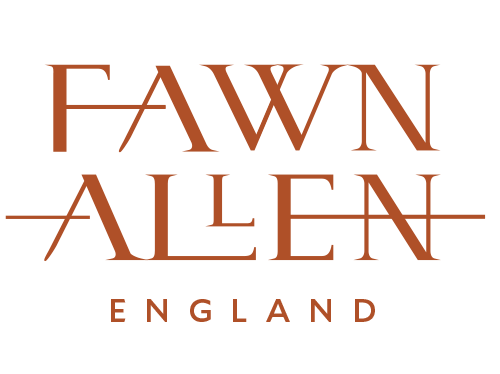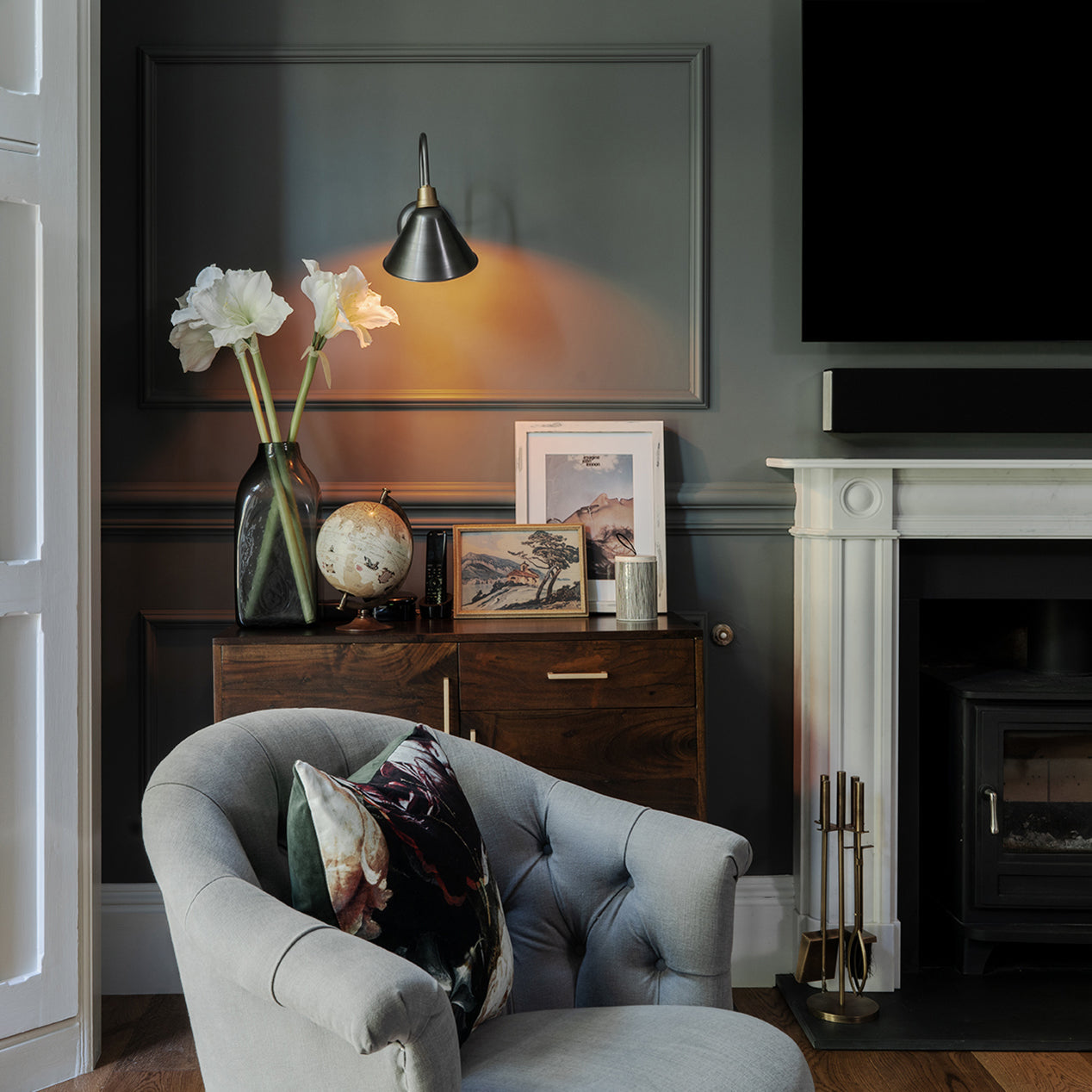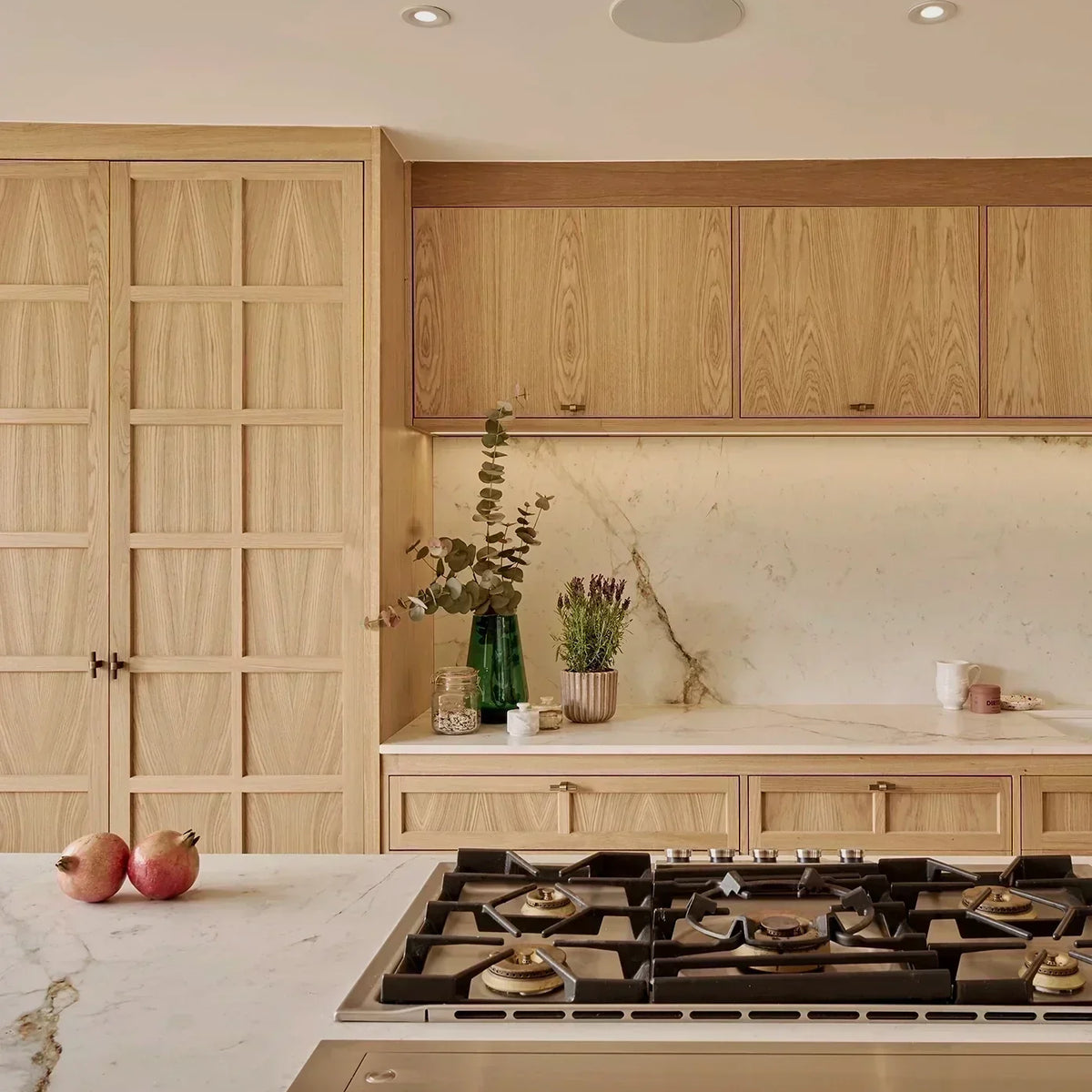THROUGH THE FAWN LENS
Natural Wall Finishes for a Timeless and Sustainable Home
Why Choose Natural Wall Finishes?
Natural wall finishes connect a home to the rhythms of the earth. Unlike synthetic paints, they breathe, regulate humidity, and develop subtle changes over time. Historically, these finishes have been used for centuries - clay plaster in European cottages, tadelakt in Moroccan riads, limewash across Mediterranean homes - each bringing both functional and aesthetic value. Beyond their practical benefits, natural finishes create spaces that feel calm, grounded, and alive, with textures and tones that shift with light throughout the day.
Image: Portola Paints
Clay Plaster: Warmth and Earthiness
What it is:
Clay plaster is made from natural clay, sand, and sometimes fibres. It has been used for millennia across Europe and Asia as a wall finish, valued for its earthy tones and tactile quality. Clay plaster imbues walls with warmth, subtle colour variation, and a soft, velvety texture that feels alive to the touch. Historically, it was a low-cost and practical solution, providing insulation while blending seamlessly with the natural surroundings. Today, it’s prized for both its aesthetic beauty and eco-friendly properties.
Pros:
100% natural and non-toxic
Regulates indoor humidity
Provides sound insulation
Warm, tactile finish with subtle tonal variation
Cons:
Softer and less durable than lime-based plasters
Not suitable for high-splash areas without sealing
Requires skill to achieve a smooth, even finish
Application:
Clay plaster is typically applied in two or three thin coats with a trowel, over a suitable substrate such as base plaster or drywall. Each coat is allowed to dry before polishing or burnishing to enhance its soft matte surface. Pigments can be added for a wider range of earthy tones.
Best for:
Bedrooms, living rooms, or any space where warmth, texture, and a natural atmosphere are desired.

Image left: Architectural Digest. Image right: Eagle Island Lodge
Tadelakt: Moroccan Elegance
What it is:
Tadelakt is a traditional Moroccan lime plaster that creates a polished, slightly glossy surface. Dating back centuries, it was originally used in hammams (bathhouses) and riads, prized for its waterproof properties and sculptural elegance. Tadelakt walls feel smooth and sensual, with subtle tonal shifts that reflect light in soft, organic ways. This finish brings a luxurious yet earthy feel to interiors.
Pros:
Waterproof and durable
Elegant, soft sheen
Long-lasting if properly maintained
Adds sculptural, artistic quality to walls
Cons:
Labor-intensive and requires specialist skills
Higher cost than typical plaster or paint
Needs regular maintenance to preserve finish
Application:
Applied in multiple thin coats of lime plaster, tadelakt is compressed and polished with a stone while damp. Finally, a natural soap solution is applied to create a water-resistant, slightly glossy surface.
Best for:
Bathrooms, kitchens, and spa-like spaces where durability and natural beauty are equally important.

Image: Daytrip Studio
Limewash: Soft and Timeless
What it is:
Limewash is a traditional mineral paint made from slaked lime and water, sometimes enhanced with natural pigments. Dating back to ancient Europe and the Mediterranean, it was historically used to coat walls and ceilings, providing a breathable, antimicrobial, and aesthetically soft finish. Limewash creates walls that appear gently weathered, with tonal variation that adds character and subtle depth.
Pros:
Natural, breathable, and antimicrobial
Low-cost and eco-friendly
Ages beautifully, developing a unique patina
Soft, light-diffusing finish
Cons:
Not wipeable like modern paints
Can powder off if poorly applied
Limited durability in high-traffic or high-moisture areas
Application:
Applied with a masonry brush in crisscross strokes, limewash is usually layered in several thin coats, allowing each coat to dry completely. Mineral pigments can be added to achieve muted or earthy colors.
Best for:
Feature walls, hallways, or historic-style interiors where subtle texture and natural charm are desired.
Image: Farrow & Ball
Casein Paint: Velvety Simplicity
What it is:
Casein paint is a milk-protein-based paint used historically in Europe and North America before synthetic paints became widespread. It provides a matte, velvety finish that feels soft and understated. Casein paint is breathable and eco-friendly, making it an ideal choice for interior spaces with a calm, minimalist aesthetic.
Pros:
Non-toxic and natural
Breathable, contributing to healthier interiors
Affordable and versatile
Creates a soft, matte wall surface
Cons:
Less durable than modern paints
Needs to be used fresh after mixing
Limited water resistance
Application:
Brushed or rolled on like regular paint, casein paint is typically applied in two coats. It can be tinted with mineral pigments to achieve subtle, earthy colors.
Best for:
Bedrooms, reading nooks, or low-traffic areas where a gentle, natural aesthetic is desired.

Image: Clayworks
Rammed Earth: Sculpted by Nature
What it is:
Rammed earth walls are built by compacting layers of damp earth, clay, sand, and gravel into formwork. This ancient technique has been used for centuries in Asia, Africa, and the Americas. Each wall showcases natural striations, color variations, and textural depth, giving a sculptural, tactile quality that is both rustic and sophisticated. Rammed earth offers exceptional thermal mass, helping to keep interiors cool in summer and warm in winter.
Pros:
Extremely sustainable and low-impact
Excellent thermal regulation and sound insulation
Visually striking with natural color variation
Long-lasting and durable
Cons:
Requires specialist construction techniques
Not suitable for retrofitting existing walls
Higher upfront cost due to labor and formwork
Application:
Layers of damp earth are compacted within molds to build the wall structure. After removing the formwork, the surface can be left raw or sealed with natural oils or waxes to protect against moisture and enhance color.
Best for:
Eco-homes, passive houses, or any project where sustainability, natural beauty, and permanence are priorities.
Choosing the Right Natural Finish
Bathrooms: Tadelakt for water resistance and elegance
Living rooms/bedrooms: Clay plaster for warmth, limewash for softness
Feature walls: Limewash or casein paint for subtle texture
Eco-builds: Rammed earth for sustainability and timeless beauty
Final Thoughts
Natural wall finishes are more than decoration - they connect your home to the environment, improve indoor air quality, and evolve gracefully over time. Whether you prefer the earthy embrace of clay plaster, the polished elegance of tadelakt, the soft historic charm of limewash, or the raw authenticity of rammed earth, each finish brings a tactile, sensory richness that synthetic paints can never replicate. Choosing natural materials is not just a design decision - it’s an investment in a healthier, more beautiful, and timeless home.
MORE FROM THE FAWN DESIGN CIRCLE

Portfolio Styling: How Designers and Architects Can Attract Bigger Clients




